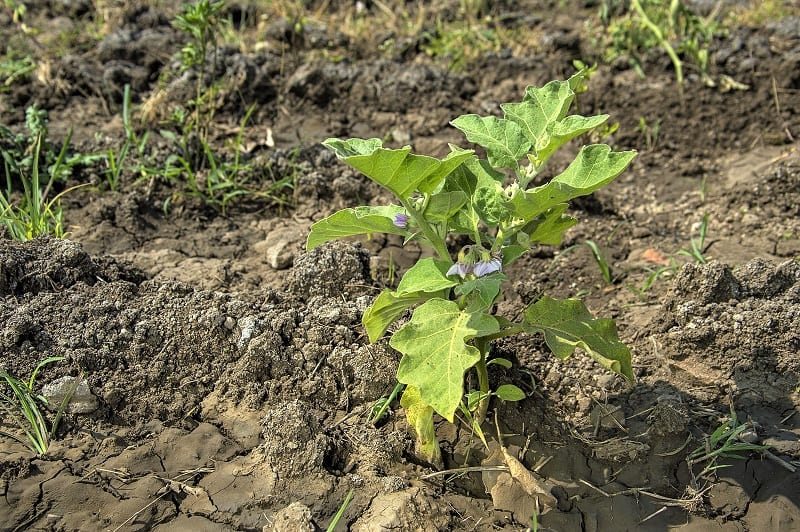The Moors brought eggplants to Europe in the 8th century, along with paper and the Hindu-Arabic numeric system. Being a native of the hot, dry regions of Africa and India, the crop thrived in the sunny climate of the Mediterranean. Gradually, over the centuries, eggplants found a cherished place in the cuisines of Spain, Sicily, and Southern France.
The eggplant is a summer vegetable. To grow a successful crop of homegrown eggplants, you will need to sustain warm growing conditions for at least three months. Eggplants exposed to chilly weather will suffer from pests and disease.

Growing Eggplants from Seed
Contents
You can give eggplants a lead over the growing season by starting them indoors, six to nine weeks before the last frost. Soak the seeds overnight to coax germination. Then, sow the seeds in vermiculite, making sure they are ¼ inch deep in the medium. Use bottom heat to maintain a soil temperature of 27°C to 32°C for eight to 10 days.
Transplant the seedlings to individual pots once they reach a height of 3 inches. You can begin hardening them off once nighttime air temperatures are above 10°C, gradually exposing them to the outdoors in the daytime.
You may need to transplant the seedlings into progressively larger pots as you wait for outdoor temperatures to rise to at least 21°C.

Planting Eggplant Seedlings
Meanwhile, prepare a sunny planting bed for your eggplant seedlings. Work an inch of aged manure into the bed a week before planting. Eggplant grows best in well-draining sandy loam or loam soil that is rich in organic matter. The plant requires a pH of between 5.8 and 6.5 for best growth. If necessary, throw a sheet of black plastic mulch over the bed to warm heavy clay soils.
The seedlings will be ready for transplanting when they are about 3 to 4 inches tall. Do not transplant them outdoors until the threat of frost has passed. Plant the seedlings 2½ feet apart in rows that are 3 to 4 feet apart.
Stake the plants right away, driving the poles into the soil an inch or two from the plant to provide support as they climb. Water the bed well and add a layer of mulch over the soil to deter weeds and ensure adequate moisture for your young plants.

Tending to Your Eggplant Crop
Eggplants need about an inch of water a week during the growing season. You may have to increase watering during times of hot, arid weather. If you live in a cold climate, consider using row covers to keep the eggplants warm and sheltered.
Row covers will likewise form a physical barrier between the plants and insect pests. Should you decide to install them, open the ends of the row covers on warm days so that bees can pollinate your crop.
Flea beetles are the eggplant’s worst pest. If your plants become infested, spray Beauveria bassiana or spinosad to save your plants. You should also hand-pick and destroy yellow-and-black-striped Colorado potato beetles and the yellow eggs they lay on the undersides of eggplant leaves.

Harvesting Eggplants
Depending on the variety, your eggplants should be ready to be harvested within 65 to 80 days of transplanting. Pick eggplant when the skin takes on a high gloss. Japanese eggplant may be ready for harvest when they are the size of a finger or a hot dog.
To test, press the skin. If the indentation left by your finger doesn’t spring back, the fruit is ready for picking. Clip the ripe eggplant off the plant with pruning shears, keeping the cap and about one inch of stem intact.

Are you ready to grow eggplants in your backyard?








